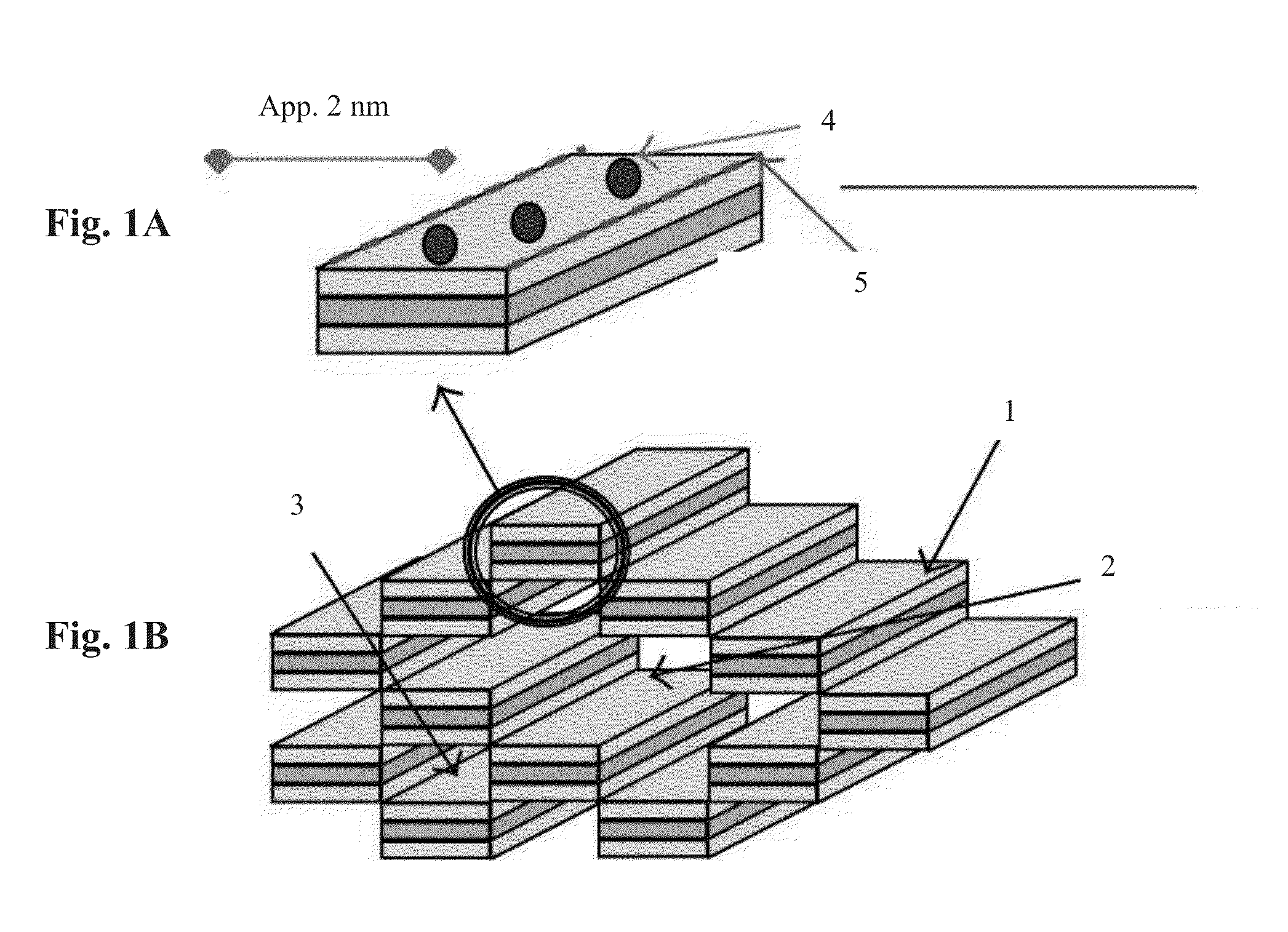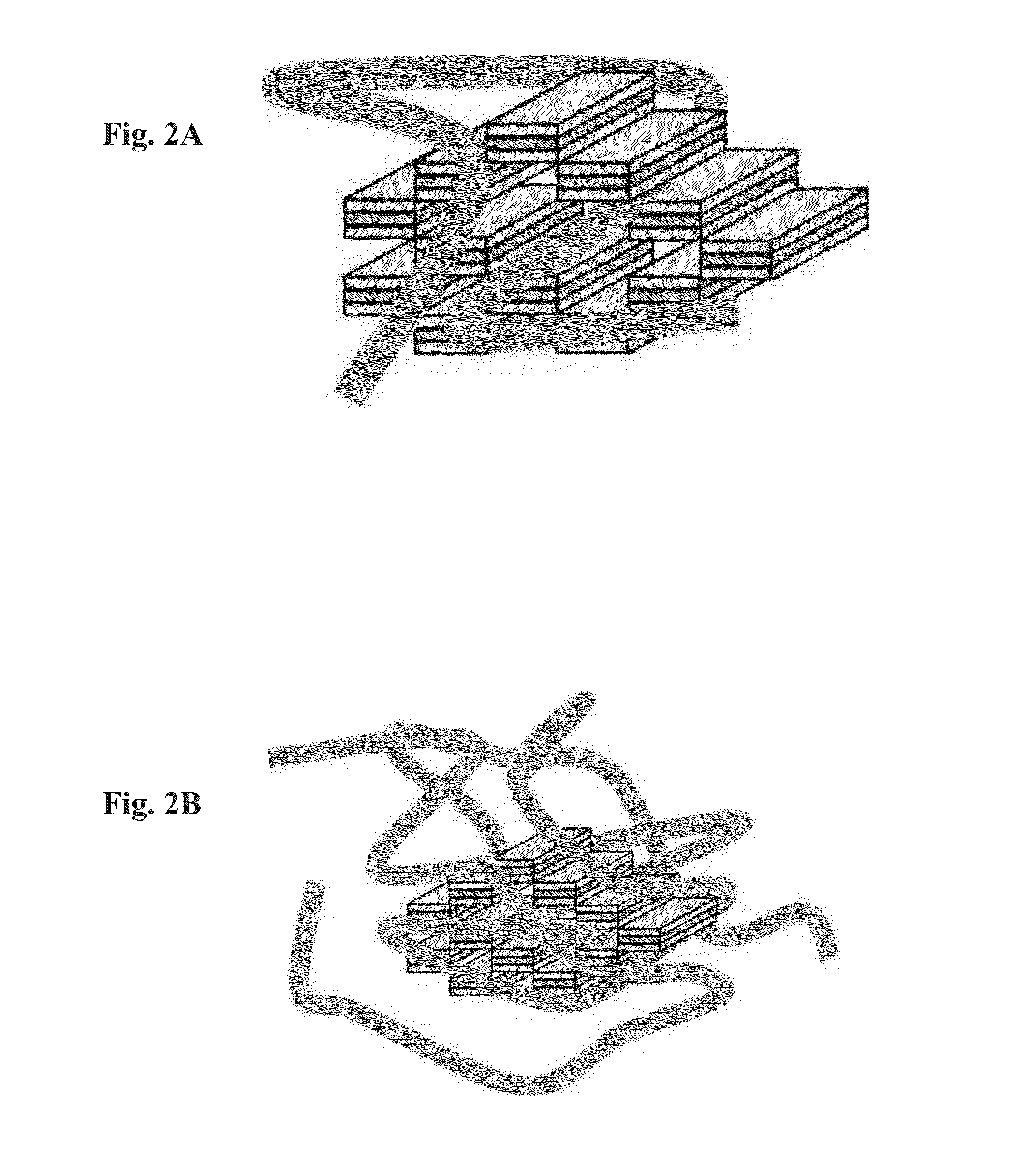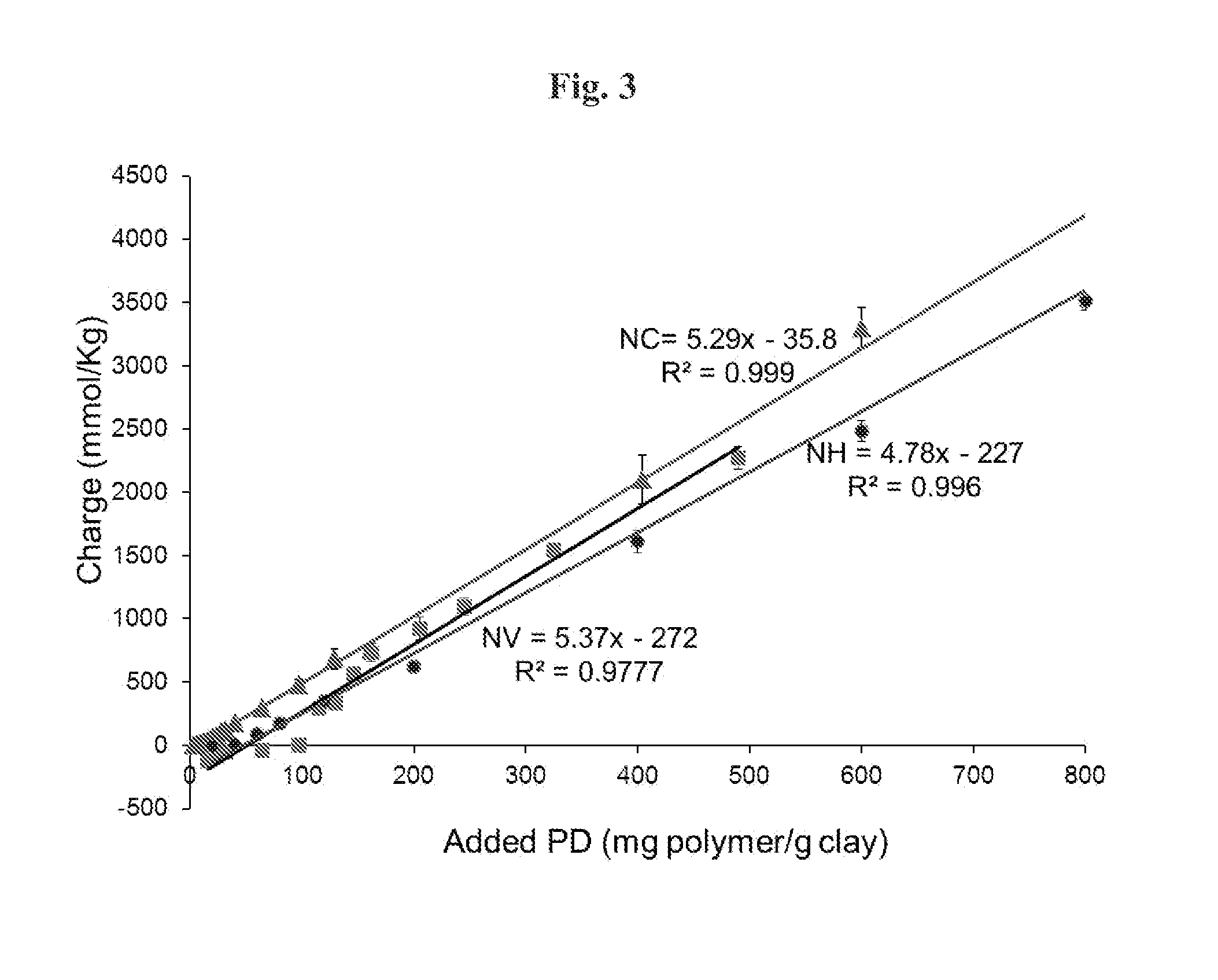Method for pretreatment of wastewater and recreational water with nanocomposites
a technology of nanocomposites and wastewater, which is applied in the direction of water treatment compounds, wastewater treatment from plant processing, water/sludge/sewage treatment, etc., can solve the problems of water inadequate for disposal in common sewage systems and serious environmental problems, and achieve the effect of rapid and efficient pretreatment of wastewater and high organic load
- Summary
- Abstract
- Description
- Claims
- Application Information
AI Technical Summary
Benefits of technology
Problems solved by technology
Method used
Image
Examples
example 1
General Method for Preparation of the Nanocomposites
[0085]Nanocomposites were prepared at loads ranging between 3 and 2400 mg polymer / g clay at 100 g clay per kg (10%) suspension for NC, 3 and 1200 trig polymer / g clay at 50 g clay per kg (5%) suspension for NH, and 3 and 500 mg polymer / g clay at 20 g clay per kg (2%) suspension for NV. Clay and polymer concentrations were chosen to obtain a sufficiently fluid suspension, allowing accurate and efficient application.
example 2
Preparation of Nanocomposites Comprising Sepiolite S9 and Poly-DADMAC, Herein Identified as NC
[0086]Nanocomposites were prepared from sepiolite and poly-DADMAC at loads ranging between 3 and 2400 mg polymer / g clay. Concentrated batches containing 100 g clay / kg (10%) suspension were prepared. To produce the nanocomposites, a solution containing the requested amount of polymer was prepared according to the desired amount of polymer per g of clay. As an example, the procedure for the preparation of a 10% stock suspension of 50 g nanocomposite with 100 mg poly-DADMAC / g sepiolite S9 was as follows. The concentrated polymer (poly-DADMAC, usually 40% w / w) was dissolved in a suitable amount of warm water to obtain a final volume of 500 ml, containing 5 g of the polymer. The solution was placed in a sonication bath to obtain a homogeneous solution. Upon complete dissolution, the polymer solution was poured into a container with 50 g of sepiolite and agitated vigorously for 2 hours. Preparati...
example 3
Preparation of Nanocomposites Comprising Sepiolite S9 and Chitosan, Herein Identified as NH Nanocomposites
[0087]NH nanocomposites were prepared as described in Example 1, but at loads ranging between 3 and 1200 mg polymer / g clay at 50 g clay / kg (5%) suspension for NH.
PUM
| Property | Measurement | Unit |
|---|---|---|
| size | aaaaa | aaaaa |
| size | aaaaa | aaaaa |
| volume | aaaaa | aaaaa |
Abstract
Description
Claims
Application Information
 Login to View More
Login to View More - R&D
- Intellectual Property
- Life Sciences
- Materials
- Tech Scout
- Unparalleled Data Quality
- Higher Quality Content
- 60% Fewer Hallucinations
Browse by: Latest US Patents, China's latest patents, Technical Efficacy Thesaurus, Application Domain, Technology Topic, Popular Technical Reports.
© 2025 PatSnap. All rights reserved.Legal|Privacy policy|Modern Slavery Act Transparency Statement|Sitemap|About US| Contact US: help@patsnap.com



